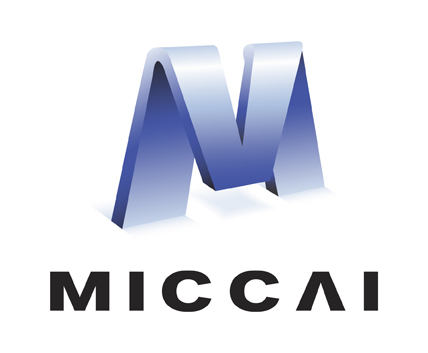Abstract
With growing emphasis on personalized cancer-therapies, radiogenomics has shown promise in identifying target tumor mutational status on routine imaging (i.e. MRI) scans. These approaches largely fall into two categories: (1) deep-learning/radiomics (context-based) that employ image features from the entire tumor to identify the gene mutation status, or (2) atlas (spatial)-based to obtain likelihood of gene mutation status based on population statistics. While many genes (i.e. EGFR, MGMT) are spatially variant, a significant challenge in reliable assessment of gene mutation status on imaging is the lack of available co-localized ground truth for training the models. We present Spatial-And-Context aware (SpACe) “virtual biopsy” maps that incorporate context-features from co-localized biopsy sites along with spatial-priors from population atlases, within a Least Absolute Shrinkage and Selection Operator (LASSO) regression model, to obtain a per-voxel likelihood of the presence of a mutation status (\(M^{+}\) vs \(M^{-}\)). We then use probabilistic pair-wise Markov model to improve the voxel-wise likelihood. We evaluate the efficacy of SpACe maps on MRI scans with co-localized ground truth obtained from biopsy, to predict the mutation status of 2 driver genes in Glioblastoma (GBM): (1) \(EGFR^{+}\) versus \(EGFR^{-}\), (n = 91), and (2) \(MGMT^{+}\) versus \(MGMT^{-}\), (n = 81). When compared against state-of-the-art deep-learning (DL) and radiomic models, SpACe maps obtained training and testing accuracies of 90% (n = 70) and 90.48% (n = 21) in identifying EGFR amplification status, compared to 80% and 71.4% via radiomics, and 74.28% and 65.5% via DL. For MGMT methylation status, training and testing accuracies using SpACe were 88.3% (n = 60) and 71.5% (n = 21), compared to 52.4% and 66.7% using radiomics, and 79.3% and 68.4% using DL. Following validation, SpACe maps could provide surgical navigation to improve localization of sampling sites for targeting of specific driver genes in cancer.
Access this chapter
Tax calculation will be finalised at checkout
Purchases are for personal use only
Similar content being viewed by others
References
Koljenović, S., et al.: Discriminating vital tumor from necrotic tissue in human glioblastoma tissue samples by Raman spectroscopy. Lab. Invest. 82(10), 1265–1277 (2002)
Qazi, M., et al.: Intratumoral heterogeneity: pathways to treatment resistance and relapse in human glioblastoma. Ann. Oncol. 28(7), 1448–1456 (2017)
Della Puppa, A., et al.: MGMT expression and promoter methylation status may depend on the site of surgical sample collection within glioblastoma: a possible pitfall in stratification of patients? J. Neurooncol. 106(1), 33–41 (2012). https://doi.org/10.1007/s11060-011-0639-9
Chang, P., et al.: Deep-learning convolutional neural networks accurately classify genetic mutations in gliomas. Am. J. Neuroradiol. 39(7), 1201–1207 (2018)
Korfiatis, P., Kline, T.L., Lachance, D.H., Parney, I.F., Buckner, J.C., Erickson, B.J.: Residual deep convolutional neural network predicts MGMT methylation status. J. Digit. Imaging 30(5), 622–628 (2017). https://doi.org/10.1007/s10278-017-0009-z
Li, Z., Wang, Y., Yu, J., Guo, Y., Cao, W.: Deep learning based radiomics (DLR) and its usage in noninvasive IDH1 prediction for low grade glioma. Sci. Rep. 7(1), 1–11 (2017)
Li, Z.-C., et al.: Multiregional radiomics features from multiparametric MRI for prediction of MGMT methylation status in glioblastoma multiforme: a multicentre study. Eur. Radiol. 28(9), 3640–3650 (2018). https://doi.org/10.1007/s00330-017-5302-1
Parker, N.R., et al.: Intratumoral heterogeneity identified at the epigenetic, genetic and transcriptional level in glioblastoma. Sci. Rep. 6, 22477 (2016)
French, P.J., et al.: Defining EGFR amplification status for clinical trial inclusion. Neuro-oncology 21(10), 1263–1272 (2019)
Ellingson, B., et al.: Probabilistic radiographic atlas of glioblastoma phenotypes. Am. J. Neuroradiol. 34(3), 533–540 (2013)
Bilello, M., et al.: Population-based MRI atlases of spatial distribution are specific to patient and tumor characteristics in glioblastoma. NeuroImage Clin. 12, 34–40 (2016)
Haralick, R.M., et al.: Textural features for image classification. IEEE Trans. Syst. Man Cybern. 3(6), 610–621 (1973)
Prasanna, P., et al.: Co-occurrence of local anisotropic gradient orientations (collage): a new radiomics descriptor. Sci. Rep. 6, 37241 (2016)
Tibshirani, R.: Regression shrinkage and selection via the lasso. J. Roy. Stat. Soc. Ser. B (Methodol.) 58(1), 267–288 (1996)
Monaco, J.P., et al.: High-throughput detection of prostate cancer in histological sections using probabilistic pairwise markov models. Med. Image Anal. 14(4), 617–629 (2010)
Tustison, N.J., et al.: N4ITK: improved N3 bias correction. IEEE Trans. Med. Imaging 29(6), 1310–1320 (2010)
Xiong, J., et al.: Implementation strategy of a CNN model affects the performance of CT assessment of EGFR mutation status in lung cancer patients. IEEE Access 7, 64583–64591 (2019)
Keilwagen, J., Grosse, I., Grau, J.: Area under precision-recall curves for weighted and unweighted data. PLoS ONE 9(3), e92209 (2014)
Author information
Authors and Affiliations
Corresponding author
Editor information
Editors and Affiliations
Rights and permissions
Copyright information
© 2020 Springer Nature Switzerland AG
About this paper
Cite this paper
Ismail, M. et al. (2020). Spatial-And-Context Aware (SpACe) “Virtual Biopsy” Radiogenomic Maps to Target Tumor Mutational Status on Structural MRI. In: Martel, A.L., et al. Medical Image Computing and Computer Assisted Intervention – MICCAI 2020. MICCAI 2020. Lecture Notes in Computer Science(), vol 12262. Springer, Cham. https://doi.org/10.1007/978-3-030-59713-9_30
Download citation
DOI: https://doi.org/10.1007/978-3-030-59713-9_30
Published:
Publisher Name: Springer, Cham
Print ISBN: 978-3-030-59712-2
Online ISBN: 978-3-030-59713-9
eBook Packages: Computer ScienceComputer Science (R0)





